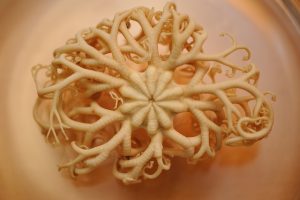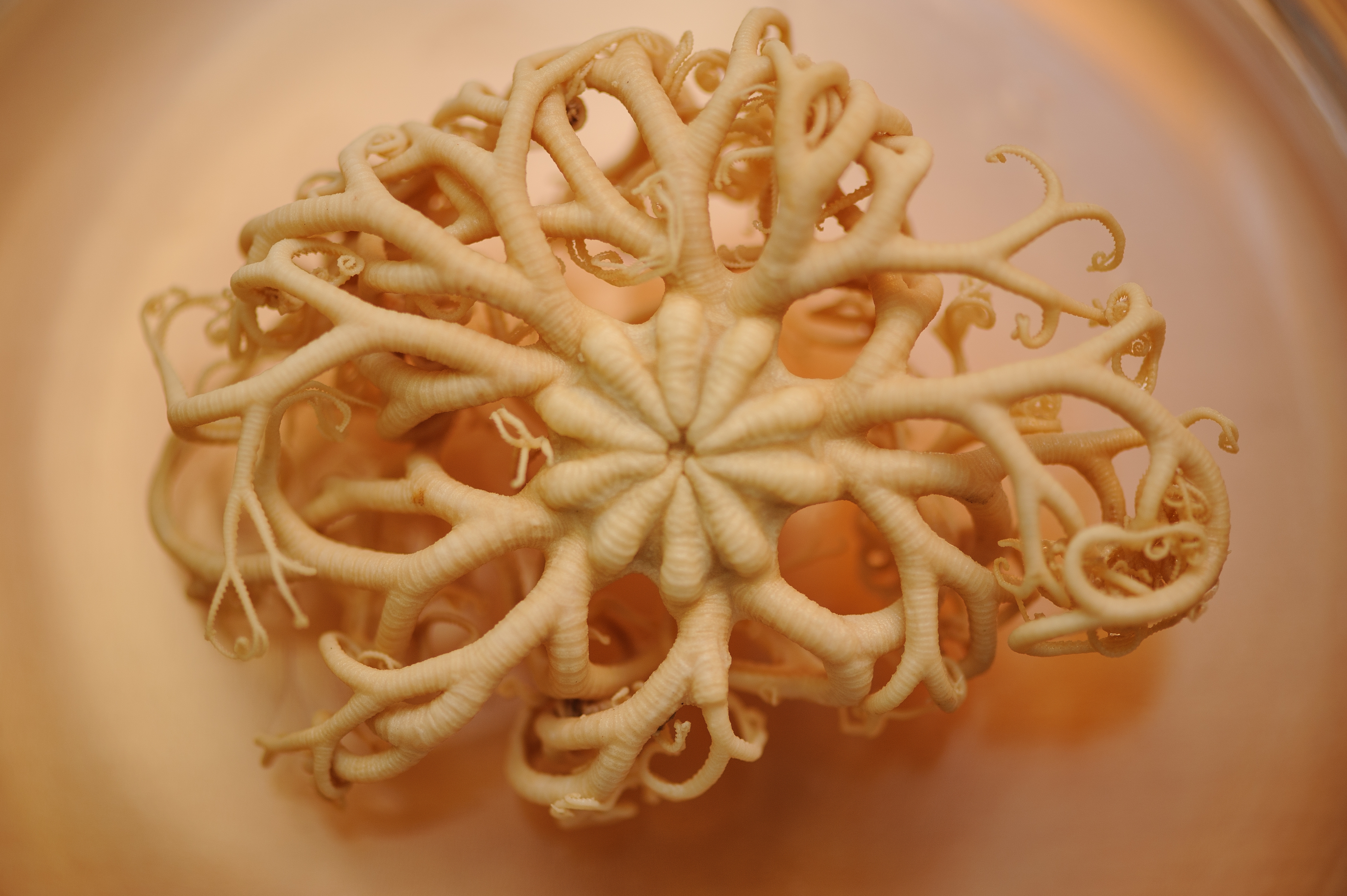
Echinodermata is a diverse group of marine invertebrates that includes familiar animals such as sea stars and sand dollars. Among the less familiar echinoderms are the serpent stars (Ophiuroidea), which usually have long, slender arms reminiscent of a snake. Most species in this group drag themselves along the sea floor with their whip-like arms in search of dead organisms, which they scavenge. However, one group of Ophiuroidea has evolved a very different feeding strategy.
The basket star (Astrocyclus caecilia) has highly branched arms that, when uncurled, form a flat, net-like structure. To feed, this species crawls up to the highest point it can find and unfurls its delicately branched arms to catch microscopic organisms called plankton floating in the water column.
The Marine Invertebrate Collection consists of more than 16,000 lots, the vast majority of which are crustaceans, followed by the molluscs. Most of this collection is housed in bottles of ethanol. The collection is housed in the Mary Harmon Bryant Collections Facility.
Kevin Kocot, assistant professor in the biological sciences department and curator of invertebrate zoology in the Alabama Museum of Natural History, provided the above information.
